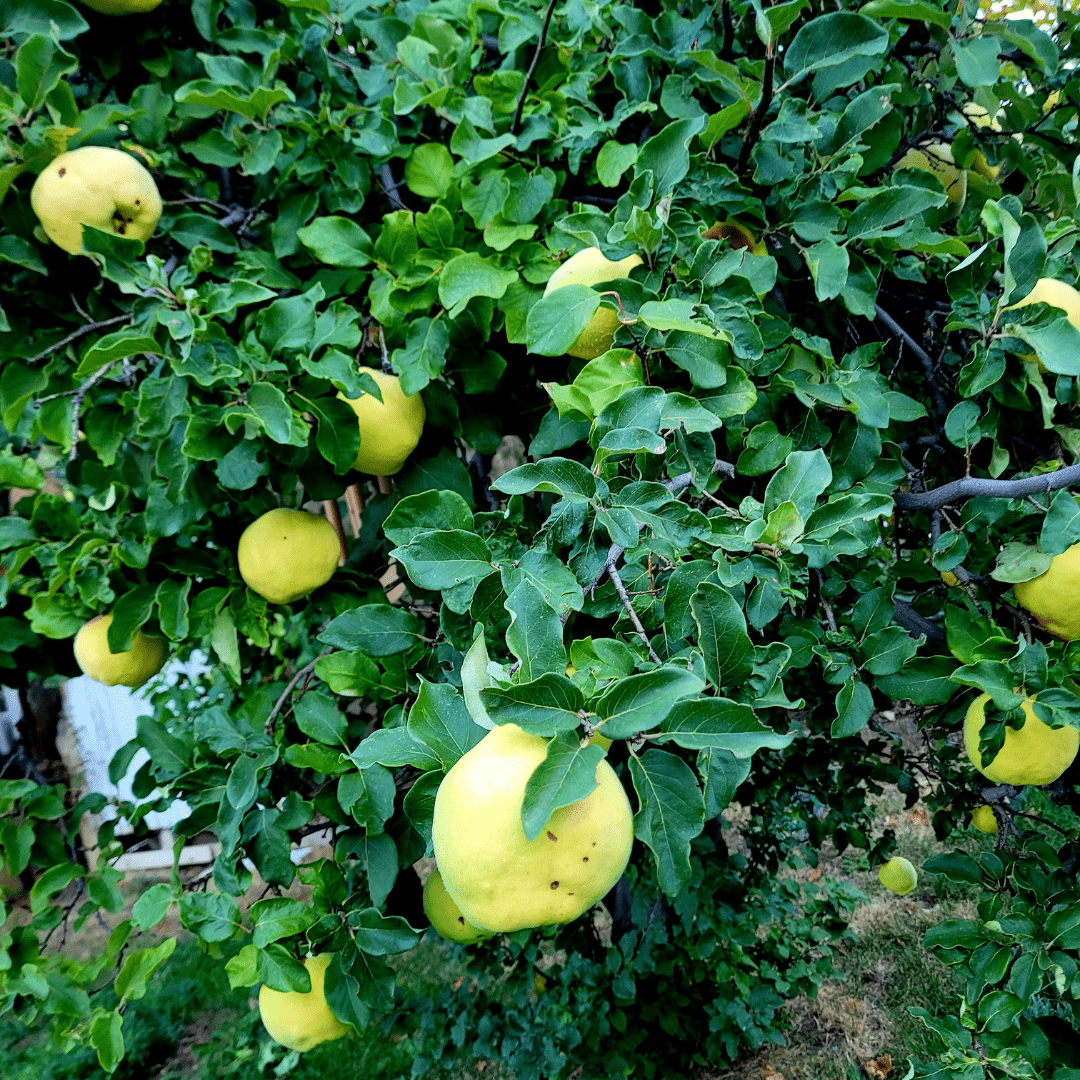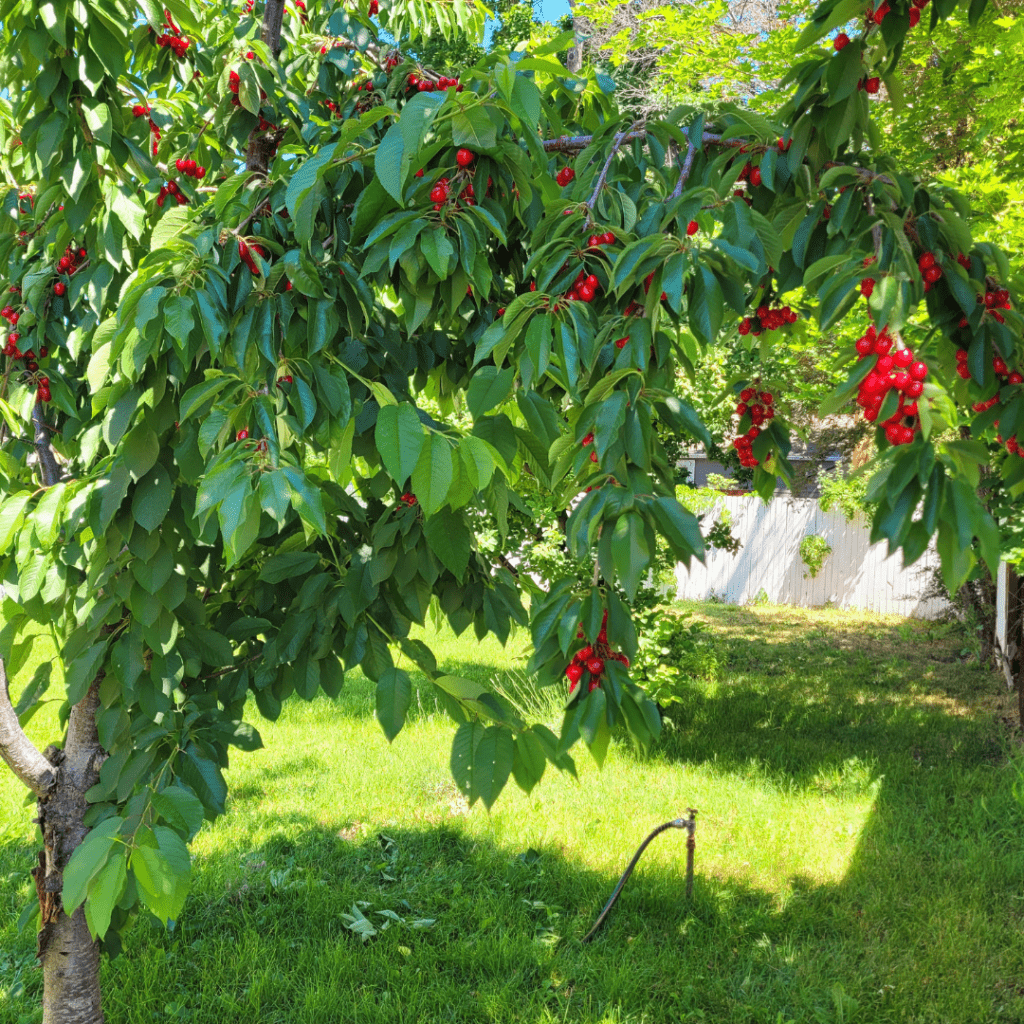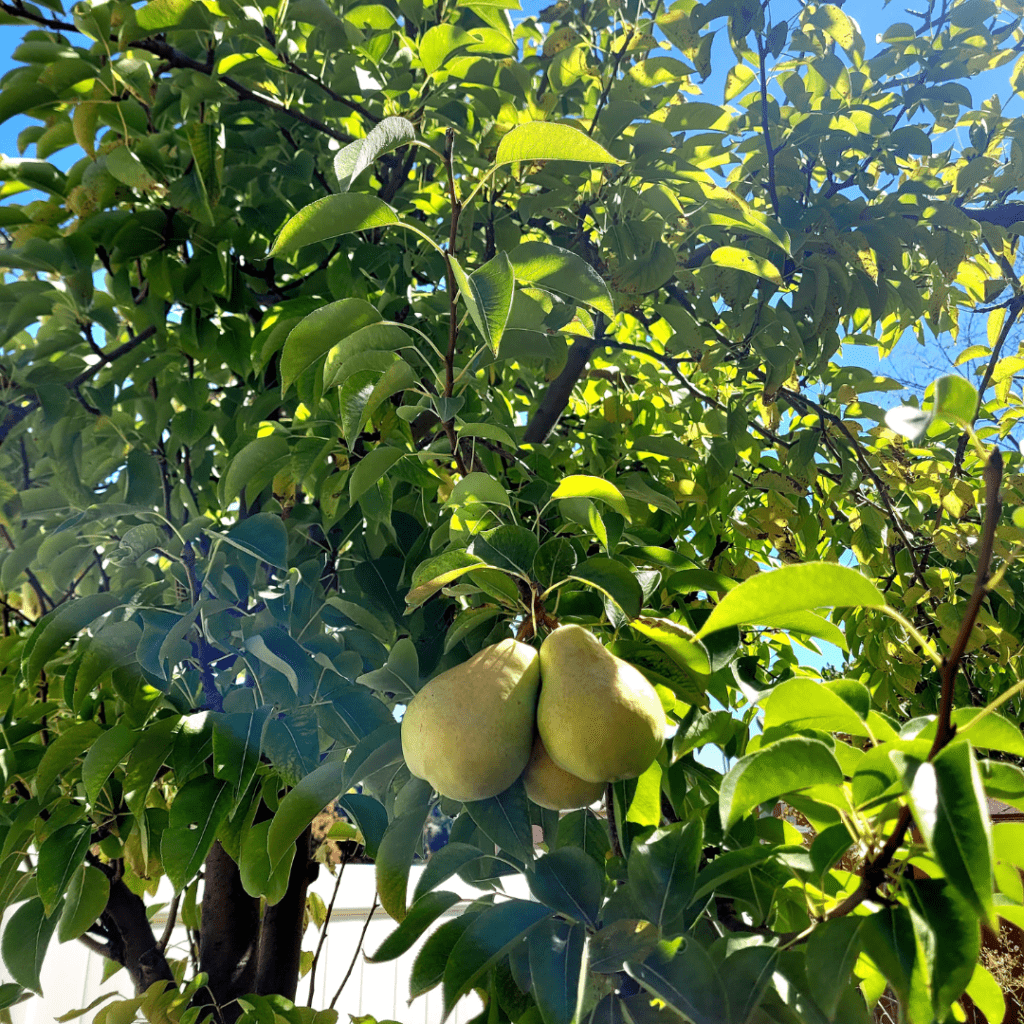Quince trees.
- Introduction to Quince Trees
- Growing and Planting Quince Trees
- Understanding Quince Tree Varieties
- Quince Tree Care and Maintenance
- Common Pests and Diseases of Quince Trees
- Harvesting and Preserving Quince Fruit
- Culinary Uses and Recipes with Quince Fruit
- More Cultural Significance and History of Quince Trees
- The Year When Quince Trees Bear Fruit
- Conclusion
- Frequently Asked Questions
- Summary
Welcome to the Ultimate Guide on Quince Trees! Quince trees, scientifically known as Cydonia oblonga, are beautiful and versatile fruit-bearing trees that have been cultivated for centuries. With their unique fruit, aromatic blossoms, and ornamental appeal, quince trees have gained popularity among gardeners and fruit enthusiasts.
In this comprehensive guide, we will explore everything you need to know about growing, caring for, and utilizing quince trees. From selecting the right variety and planting techniques to harvesting the fruit and exploring its culinary uses, this guide will provide you with all the essential information to become a quince tree expert. So, whether you are a seasoned gardener or a novice planting your first tree, let’s dive into the fascinating world of quince trees and unlock the secrets of these captivating fruit-bearing wonders.
This is a pinnable post. Tap or hover over any image in this post to pin to your Pinterest Boards.
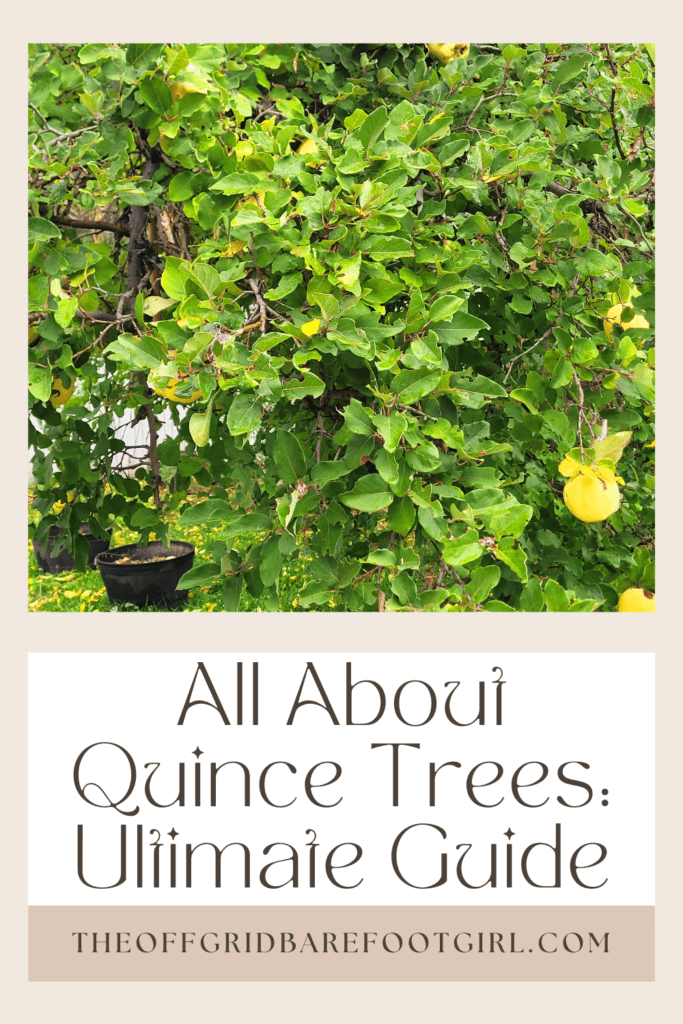
Introduction to Quince Trees
What are Quince Trees?
Quince trees might sound like a fancy name for a fruit you’ve never heard of, but trust me, they’re worth getting to know. Quince trees are small to medium-sized fruit trees that produce a unique and delicious fruit known as quince. These trees are not as common as apple or pear trees, but once you discover their beauty and charm, you’ll wonder why they aren’t more popular.
The Origin and History of Quince Trees
Let’s take a little trip back in time to explore the origin and history of quince trees. These ancient trees have been cultivated for thousands of years, and their origins can be traced back to the Middle East. These trees were highly valued by the ancient Greeks and Romans, who considered the fruit a symbol of love and fertility. Over the centuries, these trees spread to various parts of the world, adapting to different climates and becoming a beloved fruit in many cultures. So, when you bite into a quince, you’re not just tasting a fruit; you’re experiencing centuries of history!
Popular Backyard Fruit Trees
Quince trees became a popular backyard fruit tree in the early 1800s to help provide pectin in canning other fruits and vegetables since this fruit is high in pectin. Canning pectin from quince has been a sustainable skill that has been long forgotten and I aim to help bring back the knowledge of caring for and canning quince in this post.
Why I Love My Backyard Quince Tree!
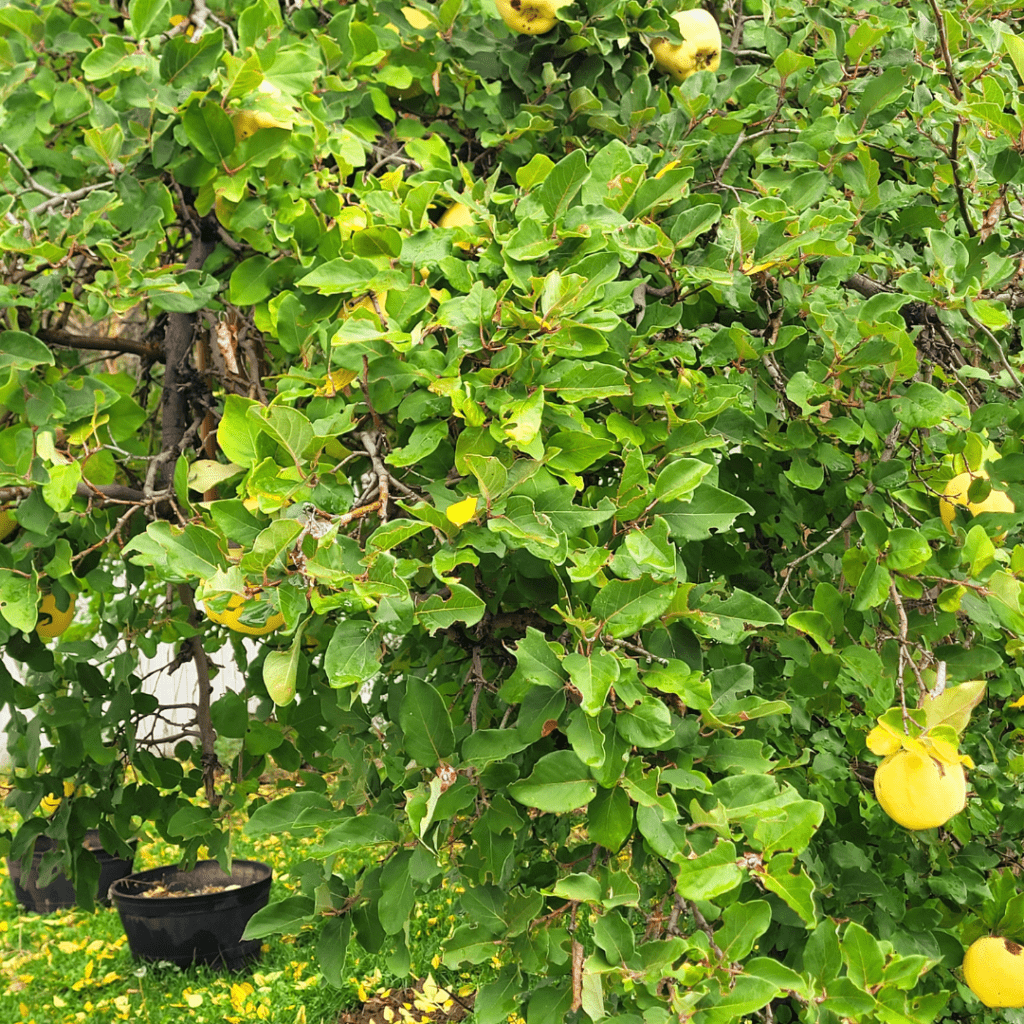
Quince trees bring delight to the garden from their gorgeous spring blooms to the delicious bountiful fruit that follows in the fall season. You can be sure to be given a huge harvest from your quince tree so be prepared to learn how to preserve them and devour some quince recipes.
One of the most fascinating things about quince fruit is that quince is packed with pectin, it is great to make a great fall flavor jam! Quince fruit is a cross between an apple and a pear. It cannot be eaten in its raw form and needs to be cooked. When cooked, quince turns from a pale white color to a dark rich rose color.
Growing and Planting Quince Trees
Choosing the Right Location for Quince Trees
Finding the perfect spot for your quince tree is crucial for its growth and productivity. These trees prefer a sunny location with well-draining soil. Think of it as finding the perfect spot for your beach vacation – these trees love basking in the sunlight and having their roots in soil that doesn’t hold on to excess moisture. So, find a sunny and well-drained spot in your garden, and your quince tree will thank you with a bountiful harvest.
Climate for Quince Trees
These trees prefer climates where they have a period of cold for them to enter dormancy and a warm dry climate to grow when they wake up. I live in Northern Utah where we have long periods of cold winters followed by hot dry summers, which is the perfect climate for my quince tree.
Preparing the Soil for Quince Trees
Okay, now that you’ve found the ideal location, it’s time to prep the soil for your quince tree. These trees aren’t too picky when it comes to soil type, but they do appreciate fertile and slightly acidic soil. Before planting, it’s a good idea to amend the soil with organic matter like compost to improve its fertility and drainage. Think of it as giving your quince tree a luxurious spa treatment – it deserves the best soil to thrive and produce those delightful fruits.
Planting Quince Trees: Step-by-Step Guide
Now that you’ve done the groundwork, it’s time to get your hands dirty and plant that quince tree. Here’s a quick step-by-step guide to help you along the way:
- Dig a hole that’s wide and deep enough to accommodate the roots of your quince tree.
- Gently lower the tree into the hole, making sure the roots are spread out and not cramped.
- Backfill the hole with soil, firming it gently around the tree to eliminate air pockets.
- Water the tree thoroughly to settle the soil and give it a good head start.
- Stand back and admire your newly planted quince tree – you’ve just become a proud tree parent!
Growing New Quince Trees From Cuttings
Take cuttings from a mature quince tree in the late fall and early winter seasons when the quince tree has entered its dormancy period and the cutting is approximately 10 inches long. Place the cuttings in water to grow the roots, which can take anywhere from a few months to root for planting. Once the roots are formed, place the rooted cutting in the soil of its permanent home in the garden or container.
Understanding Quince Tree Varieties
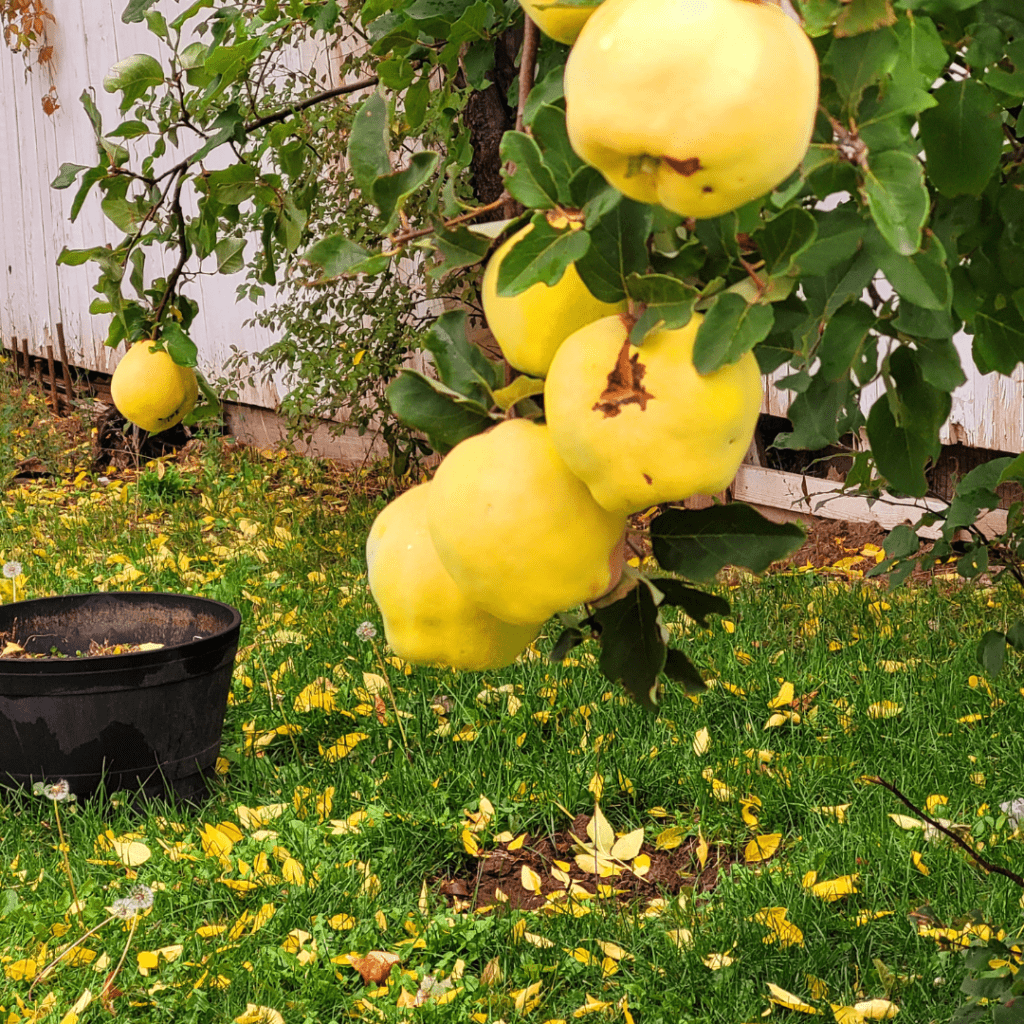
Popular Quince Tree Varieties
Just like there are different flavors of ice cream, there are various quince tree varieties to choose from. Some popular ones include ‘Champion,’ ‘Pineapple,’ and ‘Smyrna.’ Each variety has its distinct characteristics.
Comparing Quince Varieties: Taste and Characteristics
Now, let’s dive into the juicy details – the taste and characteristics of different quince varieties. While all quinces share a tart and aromatic flavor, some varieties may lean towards sweetness, while others might have a zingy and tangy profile. Some quinces are large and golden, while others are smaller and pale.
Choosing the Best Quince Tree Variety for Your Needs
With so many quince tree varieties to choose from, how do you decide which one is best for you? Well, it all comes down to your personal taste preferences and the climate in your area. Do you prefer a sweeter quince or a more tangy one? Is your region known for hot summers or cold winters? By considering these factors, you can pick the perfect quince tree variety that will thrive in your garden and make your taste buds sing.
Quince Tree Care and Maintenance
Watering and Fertilizing Quince Trees
Quince trees, like all living beings, appreciate a drink every now and then. Water your quince tree deeply and regularly, especially during dry spells. But be careful not to drown it in affection – overwatering can cause root rot. As for fertilizing, a well-balanced organic fertilizer in spring should keep your quince tree happy and healthy. Think of it as feeding your tree a nutritious meal to keep it growing strong.
Pruning and Training Quince Trees
Quince trees can get a little wild, so giving them a trim every now and then is essential. Pruning your quince tree helps maintain its shape, remove dead or diseased branches, and promote better airflow and sunlight penetration. It’s like giving your tree a stylish haircut to keep it looking fabulous while keeping those fruits within arm’s reach.
To promote new growth, prune the quince tree in the winter months during its dormancy period. Pruning the quince tree allows for maximum sunlight and aeration to the center of the tree. It also helps in preventing pests and disease by keeping the tree neatly trimmed. It is much easier to harvest a neatly pruned fruit tree too!
Common Pests and Diseases of Quince Trees
Managing Pests and Diseases in Quince Trees
Just like humans, quince trees can face some unwanted visitors and health issues. Common pests that might bug your quince tree include aphids, caterpillars, and codling moths. But fear not! You can combat these critters with organic pest control methods or by attracting beneficial insects to your garden. As for diseases, quince trees can sometimes suffer from fire blight or fungal infections. However, proper hygiene, regular inspections, and timely treatments can help keep these issues at bay.
Identifying and Treating Common Insect Pests
Ah, pests – the unwelcome guests at any fruit tree party. Quince trees are no exception, but fear not! By keeping a keen eye on your tree’s leaves and fruits, you can keep those critters in check. Again, look out for aphids, caterpillars, and mites, which can wreak havoc on your quince crop. If you spot any unwanted visitors, try using organic insecticides or introducing beneficial insects to feast on the troublemakers.
Preventing and Managing Diseases in Quince Trees
Diseases, like unwanted drama in our lives, can also find their way to the trees. But hey, we’re resourceful, and we’ve got this. To avoid diseases like fire blight and powdery mildew, make sure your tree gets plenty of sunlight and has good air circulation. Proper watering and regular pruning can also work wonders. If diseases do strike, don’t panic – there are fungicides and treatments available to nurse your quince tree back to health.
Quince Tree Pests and Diseases
- Borer is a thick sap. Worms infest and tunnel through the tree trunks that kill the tree.
- Scale is on the bark of young twigs and branches, weakening the tree that has small hard, circular, scaly raised bumps with yellow centers, and may also be on fruit.
- Tent caterpillar is hairy caterpillars that enclose large areas in webbing and feed on enclosed leaves. Remove them quickly and add them to your burn pile.
- Quince rust is bright orange spores that form on the tree. It is important to prune out infected branches as soon as possible.
- Black spot disease can cause defoliation and black spots on leaves and thrive in moist conditions. Twigs may also be infected, which can weaken and kill the tree.
- Aphids are the size of a pinhead and vary in color, which sucks the plant juices and weakens and kills the tree.
Harvesting and Preserving Quince Fruit
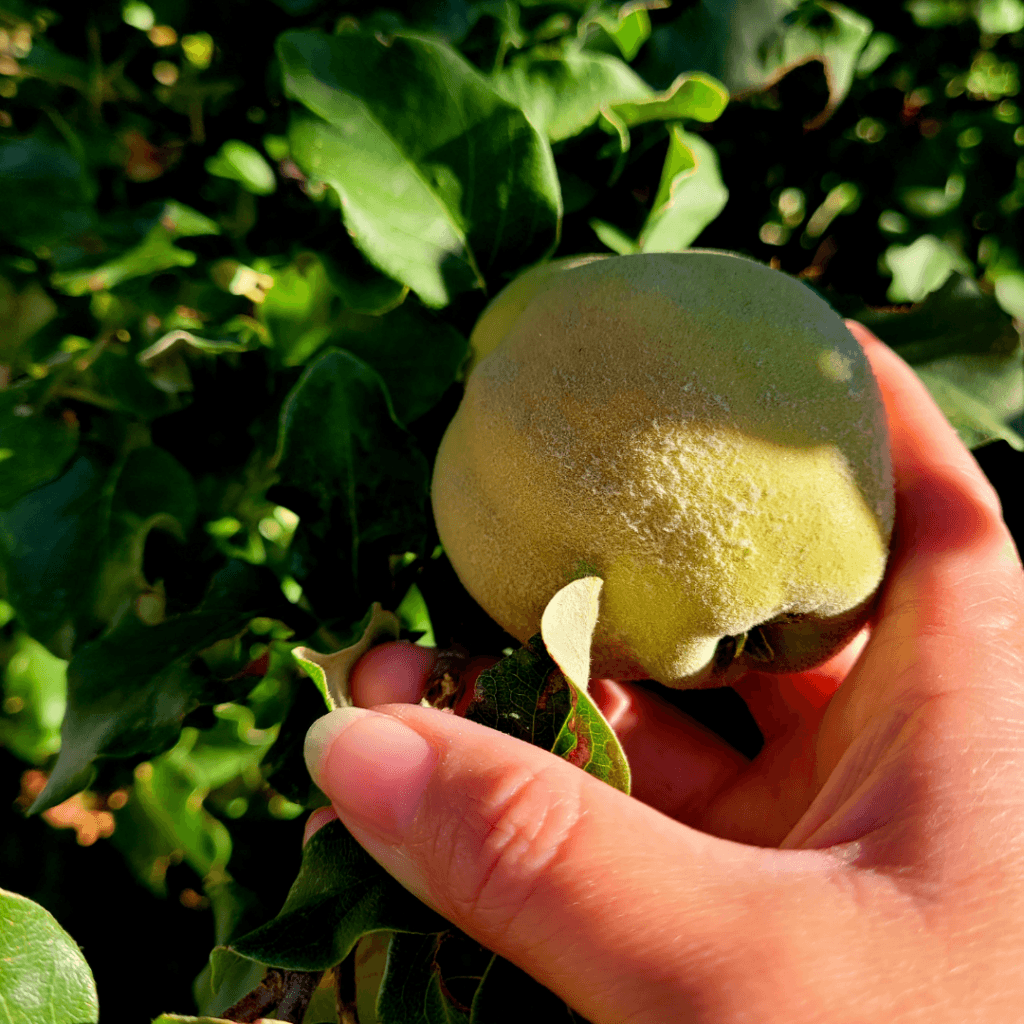
Knowing When Quince Fruit is Ready to Harvest
Quince fruit, with its golden hue and enticing fragrance, is a real treasure. But how do you know when it’s ready to be plucked? Well, my friend, it’s all about the color and texture. When the quinces turn a vibrant yellow and feel slightly soft when gently pressed, that’s your cue to bring out the harvesting basket.
How to Properly Harvest Quince Fruit
Now that your quinces have reached peak ripeness, it’s time for the grand harvest. Put on your gardening gloves, grab a pair of pruning shears, and head to the tree. Carefully cut the fruit from the branches, making sure to leave a bit of stem attached. Don’t worry if they’re not perfectly shaped – beauty comes in all forms!
Preserving Quince Fruit: Storage and Processing Methods
So, you’ve gathered a basketful of quinces. What now? Well, the good news is that these beauties have a long shelf life. You can store them in a cool, dry place for several weeks.
Quince picking begins at the end of summer and the beginning of fall, typically in October when the quince is fully ripe and rich yellow color. Harvesting should take place within a week and preserved immediately, within one to two weeks. Pick quince off the tree just as you would a pear or an apple. They are ripe when they are highly fragrant and fuzzy on the outside.
Culinary Uses and Recipes with Quince Fruit
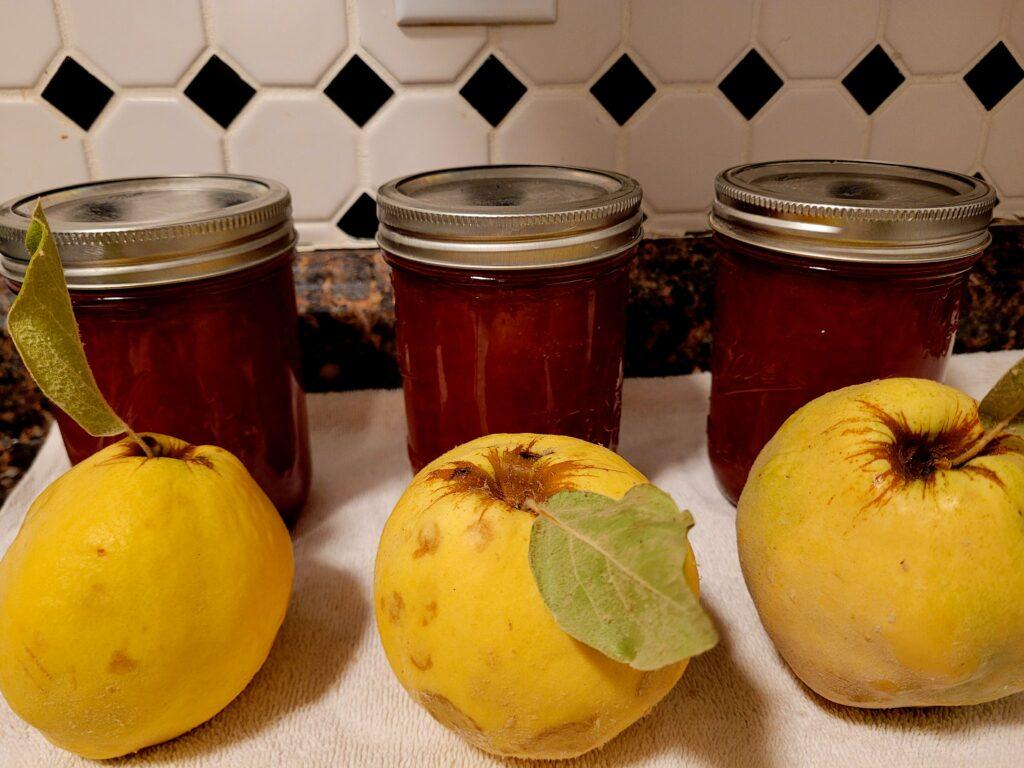
But if you want to enjoy the taste of quince beyond the harvest season, it’s time to get creative.
One popular method is to turn your quinces into delicious jams or jellies. Simply peel, core, and chop the fruit, then simmer it with some sugar and water until it turns into a heavenly concoction. Another option is to bake them into mouthwatering pies and tarts. Trust me, there’s no wrong way to preserve the incredible flavor of quince!
Quince Trees Produce Massive Amounts of Quince!
Your quince tree will begin to produce a massive amount of quince and you will need to learn how to can them.
Discover a delicious way I preserve my quince by canning quince jam. My pantry is well-stocked with quince jam and I have been gifting some to the neighbors who have been eyeing my gorgeous quince tree. Grab my quince jam canning recipe!
- How to Can a Year’s Supply of Quince Jam
- How to Can Quince
- How to Make and Can Fall Spiced Quince Chutney
Exploring Culinary Uses of Quince Fruit
When it comes to culinary delights, quince fruit is a true superstar. It brings a delightful balance between tartness and sweetness to both savory and sweet dishes. You can poach them, roast them, or even incorporate them into stews and tagines for a burst of flavor. And let’s not forget about their role in desserts – quince tarts, cakes, and crumbles are simply divine.
Delicious Quince Recipes to Try
Now that I’ve whetted your appetite, here are a few quince recipes to get your creative juices flowing. How about a mouthwatering quince and apple crumble, or a decadent quince and almond tart? If you’re feeling adventurous, give quince chutney or quince jelly a whirl. Trust me, your taste buds will thank you for this fruity adventure!
More Cultural Significance and History of Quince Trees
Quince Trees in Folklore and Mythology
Quince trees have enchanted human imaginations for centuries. In Greek mythology, the quince was seen as a symbol of love and fertility, often associated with the goddess of love herself, Aphrodite. It was even believed that when a bride ate quince before her wedding, it would ensure a sweet and fruitful marriage. Talk about a magical fruit!
Quince Trees in Different Cultures and Traditions
Quince trees have traveled the world, and everywhere they go, they leave a mark on local traditions and cuisines. From the Middle East to Europe, quinces have found their place in regional delicacies. In Turkey, for example, quince paste called “dulce de membrillo” is a beloved treat. In Spain, it pairs perfectly with Manchego cheese, creating a culinary delight. So, whether you’re exploring cultural recipes or simply admiring the charm of quince trees, these fruits have a way of celebrating diversity wherever they grow.
The Year When Quince Trees Bear Fruit
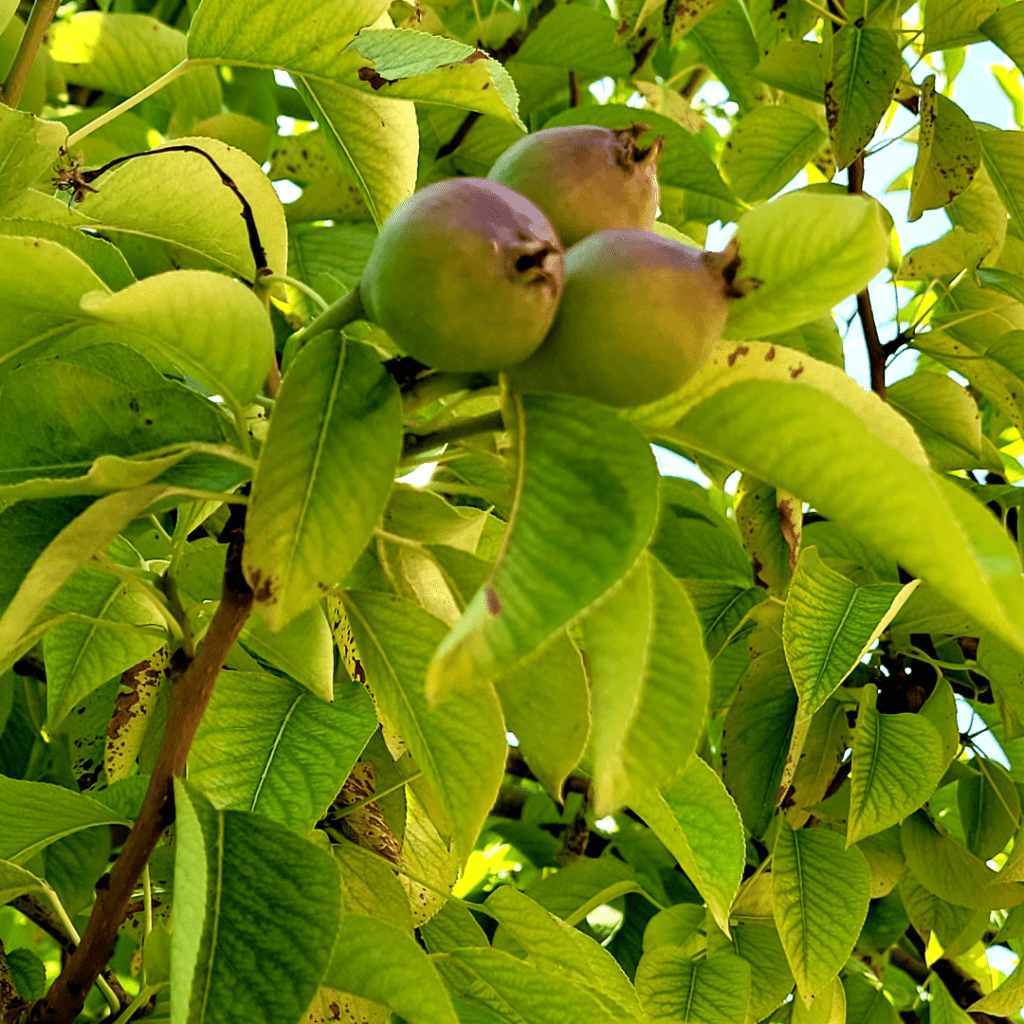
Quince trees begin to bear fruit within five years after planting. If grown and propagated from cuttings, this fruit tree can begin to bear fruit sooner than five years.
Quince trees can last up to 70 years and produce up to 320 pounds of fruit per year for a single tree. Quince trees are popular for small space backyard orchards since they are self-pollinating.
Conclusion
In conclusion, quince trees offer a delightful combination of beauty, versatility, and culinary possibilities. By following the guidelines and tips provided in this ultimate guide, you can successfully grow and care for your own quince tree, enjoy a bountiful harvest, and explore the various ways to incorporate quince fruit into your favorite recipes.
Whether you’re drawn to the rich history and cultural significance of quince trees or simply intrigued by their unique flavors and fragrances, cultivating a quince tree is a rewarding endeavor that will enhance your garden and culinary experiences. So, why not embark on this quince tree journey and enjoy the many delights that these remarkable trees have to offer? Happy quince tree growing and exploring!
Resources: Here are some helpful resources for further information.
- Quince Trees – By Trees of Antiquity
- How to Grow Quinces – By RHS
- How to Grow and Care for Quince Tree – By The Spruce
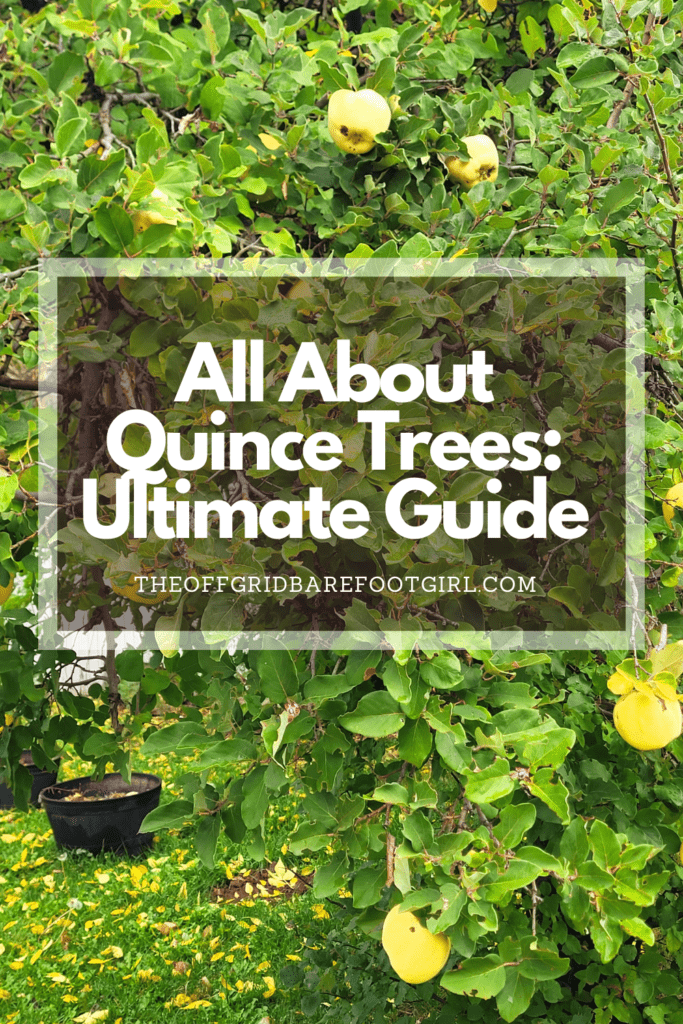
Frequently Asked Questions
1. Can quince trees tolerate cold climates?
Yes, quince trees are known for their ability to withstand cold climates. They are hardy trees that can tolerate temperatures as low as -20°F (-29°C). However, it’s important to choose quince tree varieties that are suitable for your specific climate zone to ensure optimal growth and fruit production.
2. How long does it take for a quince tree to bear fruit?
The time it takes for a quince tree to bear fruit can vary depending on several factors, including the tree’s age, growing conditions, and variety. In general, quince trees may start producing fruit within 3 to 5 years after planting. However, some varieties may take longer, requiring 6 to 8 years before they bear their first fruit.
3. Are quince fruits edible when raw?
Quince fruits are typically not consumed raw due to their tart and astringent taste. When eaten raw, they can be quite hard and unpalatable. However, quince fruits can be transformed into delicious culinary creations by cooking or baking them. The heat transforms their flavor, texture, and aroma, resulting in a delightful and versatile ingredient for various dishes, preserves, and desserts.
4. Do quince trees require specific pruning techniques?
Yes, pruning is an essential part of quince tree care. Proper pruning helps maintain the tree’s shape, promotes healthy growth, and improves fruit production. It’s recommended to prune quince trees during late winter or early spring while the tree is dormant. The pruning techniques include removing dead or damaged branches, thinning out crowded areas, and shaping the tree to allow for better air circulation and sunlight penetration.
Summary
I hope I have inspired you to grow your own quince tree.
If you were encouraged by this post, I invite you to check out my FREE Printables Page for fun free printables, planners, and charts.
ENTER MY FREE Printables Page HERE
I invite you to check out some more of my posts!
All About Cherry Trees: Ultimate Guide
All About Pear Trees: Ultimate Guide
How to Grow a Productive Perennial Raspberry Patch
Why You Need to Start Micro-Orcharding in Your Backyard
How to Grow a Productive Perennial Strawberry Patch
Blessings,
The Off Grid Barefoot Girl

